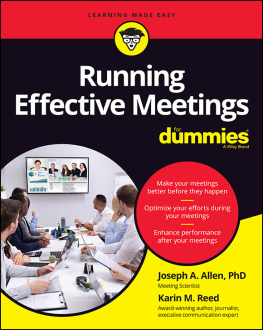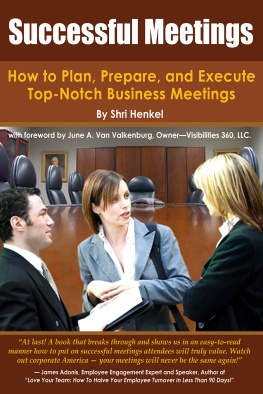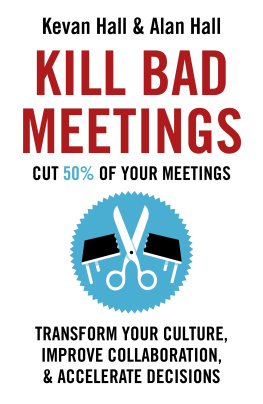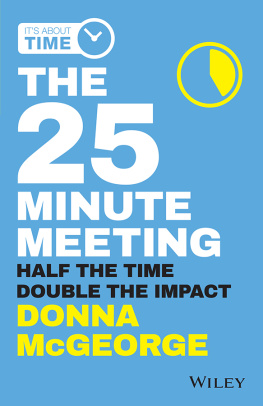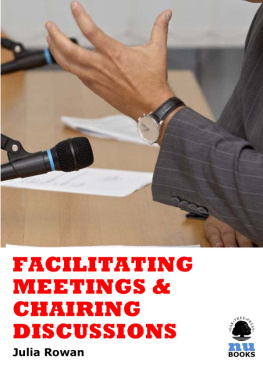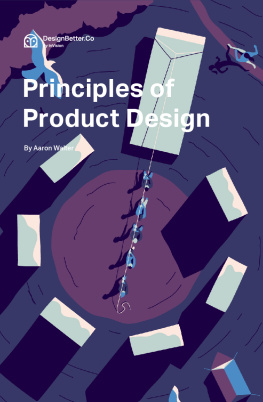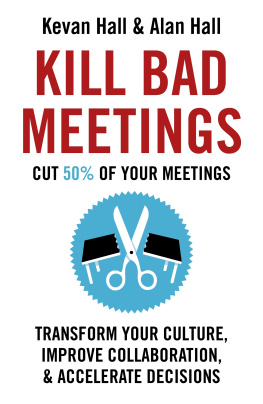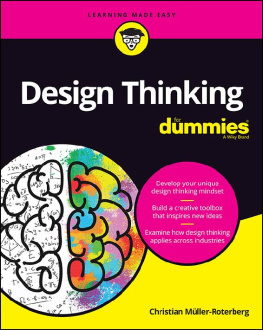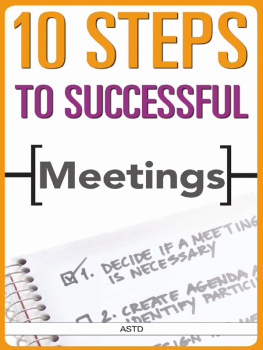Contents
MEETING DESIGN
For Managers, Makers, and Everyone
KEVIN M. HOFFMAN
Meeting Design
For Managers, Makers, and Everyone
By Kevin M. Hoffman
Two Waves Books
an Imprint of Rosenfeld Media, LLC
540 President Street
Brooklyn, New York
11215 USA
On the Web: twowavesbooks.com
Please send errors to:
Publisher: Louis Rosenfeld
Managing Editor: Marta Justak
Illustrations: Matt Sutter
Interior Layout Tech: Danielle Foster
Cover and Interior Design: The Heads of State
Indexer: Marilyn Augst
Proofreader: Sue Boshers
2018 Kevin M. Hoffman
All Rights Reserved
ISBN: 1-933820-38-1
ISBN 13: 978-1-933820-38-5
LCCN: 2017934295
Printed and bound in the United States of America
Kevin:
Marta suggested that I should dedicate my book to you.
Angela:
You should write Thank you for not divorcing me during the writing of this book.
Kevin:
Thats funny, but what if something happens to us down the road? Thats like having a tattoo of an exs name. Been there, done that.
Angela:
True.
Contents and Executive Summary
Meetings arent doing the work they should be doing.
Frame, build, optimize, facilitate, and measure meetings that do a job.
Think like a designer about the gatherings already taking place.
Design conversations to work effectively within limits posed by the human brain.
How much content can be covered? How many people can you invite? How much time will this agenda take?
Build from a classic definition of facilitation that works in any organization, and find productive conflict that moves things forward.
Sometimes, great facilitation can be as simple as asking the right question. But other times, a facilitator may need to adapt.
A meeting is a window into a groups culture. Assess that culture, build a new one, and introduce changes through better get-togethers.
A collection of meetings designed to produce outcomes and decisions.
Start a project or process with gatherings that reduce ambiguity and create direction.
Stuck in the middle of a project? Need to course correct? Use a well-designed conversation to map the terrain.
Wrap up your work with meetings that lead to continued growth and evolution.
Foreword
When I was commuting regularly to New York City for work, Id look at my calendar on the train ride in and see what meetings lay ahead. Based on how productive I felt each one was going to be, Id plan out how to pass the time in the meeting. For most, I figured I could knock out some email on my phone under the table. For a couple, I could probably get away with answering some questions from my team in chat. For one, two max, I knew Id have to pay attention and participate and, in all likelihood, show up prepared.
Why? What was the difference between these meetings where I knew I could tune out versus the ones where Id have to lean in?
Lets face itmost of my meetings were awful. They were hastily called, poorly planned, and involved far too many people to yield any kind of traction. So whats the solution? It seems to be more meetings. When you add in every companys adoption of Agile ritualsstand-ups, iteration planning meetings, and retrospectivesand multiply that times the number of projects each person supports, it becomes a miracle that anything actually ever gets done at work.
And yet, to do our best work, collaboration is required. Its a successful companys secret weapon. We need to meet with our colleagues, hear their opinions, debate options, and make clear the decisions on the next steps.
But how many meetings have you attended recently that actually yielded concrete next steps and felt like a good use of your time? If youre like most people, the answer is probably pretty low. Creating great meetings is a people problem. It requires empathy for the participants, as well as a clear sense of their goals and the decision-making framework for not only deciding how to structure the meeting but whether one should happen at all.
In the software world, we advocate for changing our mindset from one focused on outputsdelivering featuresto one motivated to drive outcomesmeaningful and measurable changes in customer behaviors. This mindset reshapes our definition of done. The same model can be applied to meetings. In some organizations, the measure of success for some people is how many meetings they attend (i.e., output). The goal is, seemingly, to spend as much time in meetings to showcase the individuals productivity, importance, and contributions. How do we know that this contribution yielded anything positive to the cause were pursuing? Just because the meetings took place doesnt mean that we had an impact of any kind on the success of our team, project, or company.
Instead, how can we figure out what outcomes our colleagues are trying to achieve by attending this meeting? Our job should be to design solutions that help them reach those outcomes. Sometimes that will be a meeting. In other cases, it might be some other activity or no activity at all.
In Meeting Design, Kevin lays out exactly how to take on meetings as a design problem, but you dont have to be a designer to appreciate this advice. He deftly illustrates how the designers toolkita collection of questions, activities, and conversationscan be applied to create the best outcomes for these age-old activities.
Kevin applies design thinking in tactical ways to teach you how to learn what your colleagues truly need. His approach lays out tactic after tactic for structuring agendas, ensuring broad, active participation, and guaranteeing that no one leaves another meeting again feeling that time was wasted. Perhaps most importantly, he provides a clear way to assess whether a meeting is actually required and how to push back to sharpen its focus or cancel it altogether.
Ive had the pleasure of spending time with Kevin personally and professionally. Ive always been impressed by his balance of detailed research, pragmatism, and sense of humor, which all translate to a remarkably well-thought-out and useful book.
Jeff Gothelf, designer, Agile practitioner, and author of Sense and Respond: How Successful Organizations Listen to Customers and Create New Products Continuously and Lean UX: Designing Great Products with Agile Teams
Introduction
Meetings Are a Design Problem
How well do the meetings you have every day do their intended job? Before you answer, consider how much of your career is spent in meetings. In more than twenty years of working in design, Ive been in thousands of them. Some were good, but many werentfilled with agendaless rambling, unstructured discussion without outcomes, and needless aversion to conflict. And Im the first to admit that Ive made many meeting mistakes along the way. Ive doodled out of boredom, distracted myself with unrelated emails and text messages, and even fallen asleep at least onceOK, maybe twice.
These negative experiences happened during a time when meetings were supposedly getting better. You can find new approaches to meetings in business and management books, workshop design and sketch facilitation books, online meeting software, agile approaches to software development, and dozens of blogs, websites, and magazines. Despite these new approaches, most people still find that they have more meetings than they like, and those meetings arent any better than they used to be. If youre a manager or you run a company, that quantity-to-quality ratio is worse: you might feel as though meetings are all that you do.


